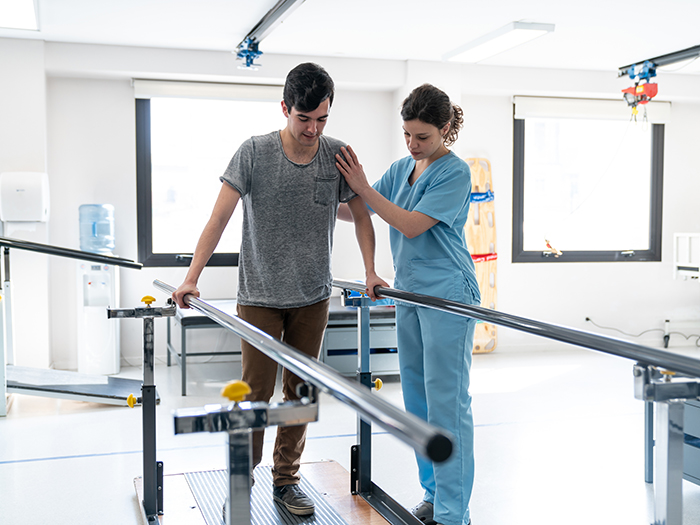Understanding different Methods to Bodily Rehabilitation for Better Rehabilitation as well as Restoration
Understanding different Methods to Bodily Rehabilitation for Better Rehabilitation as well as Restoration
Blog Article
Physical rehabilitation is one significant aspect of healing and rehabilitation for many people. This assists individuals regain vigor, improve movement, and alleviate discomfort following injuries or procedures. Various methods to physical treatment, all designed to address the distinct requirements of individuals. Understanding these diverse techniques can assist individuals form informed determinations about their rehabilitation process.
A common method to physiological rehabilitation is hands-on therapy. Such method involves physical care by a physiological specialist to adjust muscles and connections. Hands-on rehabilitation can assist alleviate pain, boost blood flow, and increase mobility. Practitioners may utilize methods such as kneading, joint movement, and elongation to aid clients recover. Such approach is commonly helpful for those with skeletal problems, such as back discomfort or joint inflammation, as it centers on the physical components of rehabilitation.
An additional crucial technique is rehabilitative exercise. Such technique entails particular movements tailored to enhance strength, stability, and coordination. Physical specialists develop personalized movement regimens based on the client's condition and aims. Such movements can vary from simple exercises to more complex activities. Restorative physical activity is essential for regaining power after an injury and avoiding future problems. This also aids patients regain belief in their physical skills, which is essential for overall healing.
Water-based rehabilitation is a different helpful technique that employs aqua to aid in healing. Such technique takes advantage of the floatation of liquid, which lessens the stress on joints and enables simpler motion. Patients can execute activities in a water environment, making it a wonderful alternative for those with restricted movement or discomfort. Aquatic therapy can help improve strength, mobility, and endurance while offering a helpful space for rehabilitation. This is especially advantageous for clients healing from procedures or those with long-term discomfort problems.
In conclusion, education and personal management are essential components of physical rehabilitation. Physiological practitioners not only provide therapy but furthermore educate clients about their issues and how to manage them. This includes understanding anatomical movement, alignment, and the significance of staying active. With enabling individuals with knowledge, specialists aid them adopt an proactive role in their healing. Such approach promotes patients to persist their rehabilitation beyond the scope of care appointments, leading to superior enduring effects.
In summary, bodily rehabilitation provides various methods to improve rehabilitation and recovery. Manual therapy, rehabilitative exercise, aquatic treatment, and knowledge all play significant functions in assisting individuals recover their power and discover this mobility. All approach is tailored to address the distinct needs of clients, guaranteeing a comprehensive approach to recovery. Through grasping these various approaches, individuals can more successfully handle their healing process and strive towards achieving their recovery goals.